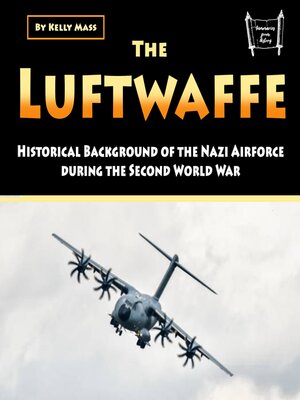The Luftwaffe
audiobook (Unabridged) ∣ Historical Background of the Nazi Airforce during the Second World War
By Kelly Mass

Sign up to save your library
With an OverDrive account, you can save your favorite libraries for at-a-glance information about availability. Find out more about OverDrive accounts.
Find this title in Libby, the library reading app by OverDrive.



Search for a digital library with this title
Title found at these libraries:
| Library Name | Distance |
|---|---|
| Loading... |
This audiobook is narrated by a digital voice.
The Luftwaffe emerged from the ashes of Germany's World War I defeat as perhaps the most technologically advanced and tactically sophisticated air force of its era, representing both the culmination of interwar military aviation development and the embodiment of Nazi Germany's aggressive ambitions. Born in secret during the 1920s and officially unveiled in 1935, the German air force would grow from a clandestine organization of fewer than 100 aircraft to a formidable military machine comprising over 4,000 combat aircraft at the outbreak of World War II. This transformation reflected not only German industrial capability and military innovation but also the strategic vision of leaders who understood that air power would be decisive in future conflicts.
The Treaty of Versailles had explicitly forbidden Germany from possessing military aircraft, but German aviation enthusiasts and military planners found creative ways to circumvent these restrictions while laying the foundation for future air power development. Commercial aviation companies like Junkers and Heinkel continued aircraft development under civilian auspices, while German pilots gained experience flying in the Soviet Union through secret cooperation agreements that benefited both nations. The German gliding movement, which flourished during the 1920s, provided basic aviation training to thousands of young Germans who would later form the nucleus of the Luftwaffe's pilot corps.
Hermann Göring's appointment as Reich Minister of Aviation in 1933 marked the beginning of the Luftwaffe's rapid expansion and institutionalization as a major component of German military power. Göring, a World War I fighter ace and early Nazi Party member, possessed both the aviation experience and political connections necessary to build a modern air force while navigating the complex bureaucratic landscape of Nazi Germany.







